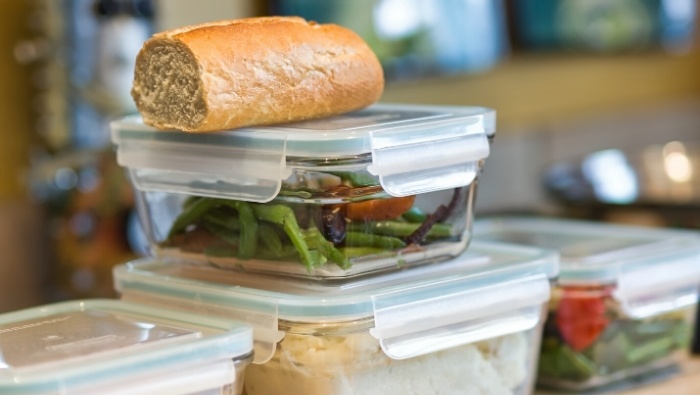Leftovers: How To Tell When Good Food Has Gone Bad
All of us want to stretch food dollars, and leftovers can help do that, but you don’t want to trade safety for savings. These guidelines can help you tell when those leftovers are OK to eat and when they need to be tossed.

All of us want to stretch our food dollars, and leftovers are often a valuable asset in our refrigerators. However, we can’t scrimp on safety when it comes to meals and our family’s health.
According to the Food and Drug Administration, food poisoning strikes one in six Americans each year, adding up to approximately 48 million cases. Of those, 128,000 require hospitalization and tragically 3000 will die.
How Can You Tell Food Has Spoiled?
That’s the tough part; you can’t tell by looking, smelling, or touching the food. No matter how convincing grandmother seems when she sniffs at the tuna casserole or pokes at the lunchmeat, she doesn’t know if the food is still safe.
Obviously, if food does smell off, has an odd appearance, or develops a hearty fuzz layer, it should be discarded, but what about in other cases?
The only sure way is to know your dates and times. How long ago did I cook this? When did this get put in the refrigerator? How long has this been sitting out on the counter?
Sign Up for Savings
Subscribe to get money-saving content by email that can help you stretch your dollars further.
Twice each week, you'll receive articles and tips that can help you free up and keep more of your hard-earned money, even on the tightest of budgets.
We respect your privacy. Unsubscribe at any time.
By the Numbers
To be certain of food safety, you must pay attention to temperatures, timing, and dates.
According to registered dietician Katherine Zeratsky on the Mayo Clinic website, “To practice food safety, quickly refrigerate perishable foods, such as meat, poultry, fish, dairy and eggs. Don’t let them sit more than two hours at typical room temperature or more than one hour at temperatures above 90 F (32 C).”
The same applies to cooked foods. Get them in the refrigerator within a couple hours at room temperature.
Heard you can’t put hot food in the refrigerator? That’s partially true. The longer you leave food out, the more chance nasty bugs and bacteria have to grow, but to keep from raising the temperature in the refrigerator, wait until the food has cooled to 90 degrees.
The US Department of Health and Human Services website advises that meat, eggs, or pasta salads can be safely stored in the refrigerator for up to three days, while hot dogs once opened must be eaten within a week, despite the “use by” date on the package. Similarly, lunch meat once opened must be consumed within three to five days, as is also the case with leftovers.
Uncooked meats such as poultry, beef or pork can stay safely in your fridge for only one to two days. If you won’t be eating them in that time period, put them in the freezer. (See: Frugally Freezing Meats: Protect Your Savings from Freezer Burn.)
When reheating leftovers, make certain the food reaches an internal temperature of 165 degrees F. If microwaving, rotate the dish, stir, and avoid any cold spots. However, leftover soups, stews, or gravies should be brought to a boil.
If your family doesn’t polish off the reheated leftovers, you can safely freeze them, even if you thawed and reheated them once already. The only issue may be with the taste quality of the food with repeated freezing.
How To Recognize Foodborne Illness
Don’t assume the last food you ate is the one that sickened you. While many foodborne illnesses do strike quickly, like between a few minutes and a couple hours, some are more insidious and can take two months or more to cause symptoms.
Symptoms typically include nausea, vomiting, stomach cramps, and diarrhea. Depending on how sick you get, you may become dehydrated as well. Some, but not all, people get fevers.
While food poisoning will make you miserable, you usually will only be ill for a few hours up to a week.
When To Seek Medical Attention
The Mayo Clinic recommends taking the following symptoms seriously and getting to the doctor as soon as possible:
- Diarrhea lasting more than 3 days
- Inability to keep food or liquids down
- Bloody stools or diarrhea
- Extreme pain and stomach cramps
- Temperature in excess of 101.5 degrees F.
- Signs of dehydration, such as excessive thirst, decreased urination, weakness, or dizziness.
- Neurological symptoms such as tingling of the arms, muscle weakness, and blurred vision.
Preventing Foodborne Illness
One of the best ways to prevent getting sick from food is to wash your hands. Also, keep your food prep area clean and avoid cross-contamination. Keep raw meats from other foods in your refrigerator and forgo kitchen sponges to avoid spreading bacteria or viruses. Instead, use paper towels, or lightweight dishrags, which can be regularly laundered in hot water.
So go ahead and whip up a casserole with those select leftovers; just remember to follow food safety rules.
Reviewed April 2025
Popular Articles
On After50Finances.com
- 9 Things You Need to Do Before You Retire
- You Didn’t Save Enough for Retirement and You’re 55+
- When Empty Nesters Reorganize and Declutter Their Home
- Reinventing Your Career in Your 50s or 60s
- What Mature Homeowners Should Know about Reverse Mortgages
- 2 Reasons to Collect Social Security Benefits As Soon As Possible


